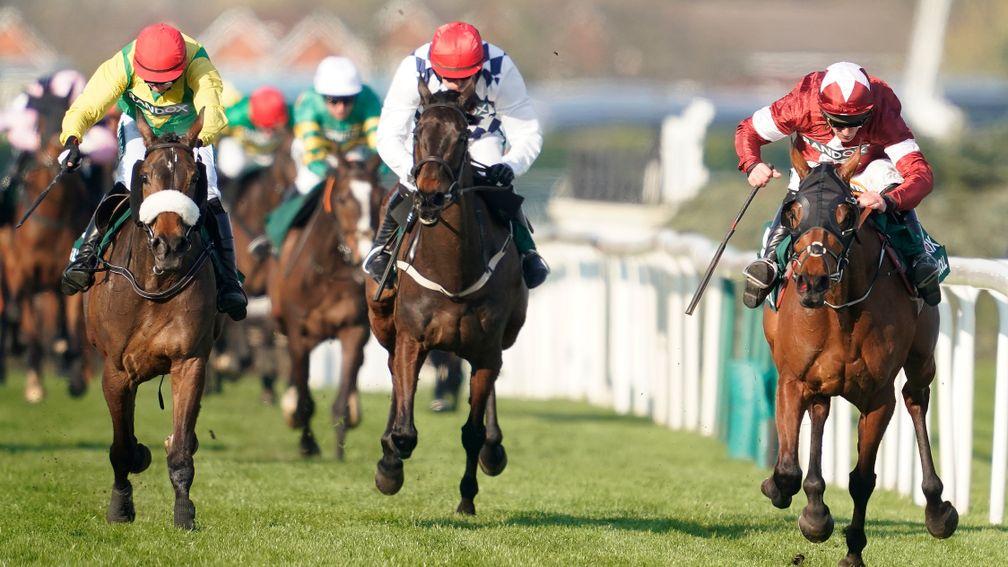Grand National weights: this is what the handicapper should do with Tiger Roll

The situation in which BHA handicapper Martin Greenwood finds himself came to mind last week, when large parts of Soho were evacuated after a half-tonne World War II bomb was discovered during building work. The leaden, heavy ordnance had not served its intended purpose and lain undiscovered for nearly 80 years.
There was a relatively happy ending in Soho, where there was a successful deactivation. Greenwood has not been so lucky. The bomb that was left under his chair has gone off.
Compression of the Grand National weights was brought in by Greenwood's predecessor in charge of staying chasers, Phil Smith. The aim was to attract more high-class horses to run in the race, by giving them lower ratings than they would be allotted in any other handicap.
The practice has been controversial and is generally seen in handicapping circles as a means for Smith to carve the Grand National in his own image. In fairness, he would be able to legitimately claim that compression has been a success. The desired correlation has been observed, although the causation is harder to prove.
Over the same period, the race's purse has swelled, while the fences have shrunk. Look at the Ebor, which draws increasingly smart types based on a hefty prize fund and an established route to the Melbourne Cup. It is hard to put the two races side by side and confidently claim that compression alone has brought the big names to Aintree.
The strong feeling is that Greenwood, who handicapped the National for the first time in 2019 and is understood not to share Smith's fondness of compression, would have quietly defused the issue within a few years. Unfortunately for him, Tiger Roll is the wrong horse – with, frankly, the wrong connections – to let the practice go out quietly. Ka-boom.
Gigginstown House Stud is owned by Ryanair chief Michael O'Leary, so it comes as no surprise that they are leveraging any perceived advantage to its full extent. It should also be familiar to note that they are ploughing on with the campaign, despite the sense that public opinion is against them. It is only the figures that matter to them. Not, in this case, counted in millions, but just a few pounds.
Naturally, they have framed their case in the most weighted terms. The campaign started straight after last year's Grand National and it is difficult not to see even the recent skirmish over Dallas Des Pictons' mark for Cheltenham – "we wouldn't cross the road with a mark like that", according to Eddie O'Leary – as a proxy war given that the same horse has since been entered at Aintree.

Racing Post handicapper Sam Walker dealt with the strict numbers a couple of weeks ago. Basically, if Tiger Roll were to be treated like a given Grand National topweight from recent history, his connections might expect up to 4lb of compression.
Of course, he is not just any topweight. He is the first multiple winner since Red Rum. Smith, when he handicapped the National, had two favourite tools: compression, and what he liked to call the Aintree factor. What he gave with one hand to top weights, he would take away from those who had previously excelled over the National fences.
Watch: Tiger Roll win last year's Grand National
Therefore, the important horse when weighing up Tiger Roll is not Bristol De Mai, nor Exotic Dancer. It is Many Clouds. He is the only Grand National topweight in recent years whose rating was based on a performance over Aintree's Grand National course, specifically his 2015 success. The extent of his compression? 1lb.
This goes for other returning winners. Ballabriggs had no compression from his mark of 160 the year after he won the National, even though the only horse with a higher rating (Synchronised) was given 6lb. In the case of Mon Mome, who was not a topweight but still carried 11st 7lb when defending his title, the Aintree factor actually held sway. He was raised 2lb.
A handicapping case for compression does exist. Most Grand National runners get their ratings from races over significantly shorter and it would be reasonable to expect a difference in the pound-per-length scale given that disparity. However, compression is a blunt instrument to address the purported issue and its days are hopefully numbered.
This year Greenwood does not need to play Gigginstown's game. Even Phil Smith, who seemed to feel an almost romantic sense of duty to the Grand National, would probably have done no more than knock off a token pound or two. If the O'Learys get even that, they should consider themselves to have been treated in line with recent history. It is predicted with confidence that will not be the case.
Read The Lowdown from 8.00am daily on racingpost.com and the Racing Post app for all the day's going updates, news and tips
Published on 10 February 2020inNews
Last updated 13:44, 13 January 2021
- The latest edition of the Racing Post is available to read online now - here's how you can access it
- How Smart View recorded a 76 per cent profit at the Cheltenham Festival
- Smart View is available on the Racing Post app - how to read the revolutionary new racecard
- Levy reform talks 'accelerating' as clock ticks down to April deadline for agreement
- Kieran Shoemark lands another plum Meydan ride for Gosden stable on Trawlerman in Saturday's Dubai Gold Cup
- The latest edition of the Racing Post is available to read online now - here's how you can access it
- How Smart View recorded a 76 per cent profit at the Cheltenham Festival
- Smart View is available on the Racing Post app - how to read the revolutionary new racecard
- Levy reform talks 'accelerating' as clock ticks down to April deadline for agreement
- Kieran Shoemark lands another plum Meydan ride for Gosden stable on Trawlerman in Saturday's Dubai Gold Cup